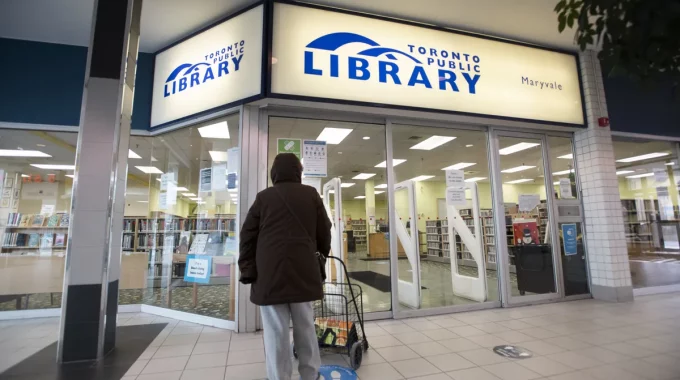The Town of Wasaga Beach is pleased to share that Darren Neil and Sons, a…

How the pandemic has highlighted the importance of libraries
If “a library is a hospital for the mind,” as is sometimes attributed to futurist Alvin Toffler, the past two years have exposed how much people need these refuges.
After being shut down early in the pandemic, Canadian libraries stepped up to offer new services. And patrons were eager to return when they opened again, joined by some coming back for the first time in decades.
“Many of us across the country saw our registration numbers go up quite substantially,” said Mary Chevreau, chair of the Canadian Urban Libraries Council and chief executive officer of the Kitchener Public Library in Kitchener, Ont. “We’ve seen people back who … haven’t been in a library since they were kids.”
But the broadened community role libraries are playing – and the bigger clientele that has come to rely on them – is threatened by the return of capacity limits and a COVID-19 variant that is slashing staff levels.
In Toronto, the country’s biggest library system closed nearly half of its facilities on Monday. The shutdown of 44 smaller branches was blamed on high numbers of staff isolating after being exposed to COVID-19, or who have tested positive. Staff from the shuttered branches will be redistributed to 52 others across the city in an effort to keep the remaining system running predictably.
Toronto Public Library head Vickery Bowles said that having the system limp along – with staff shortages forcing random shutdowns, a few hours or a few days at a time – was breaking the contract with residents. In a mid-morning interview before the closings, she pointed unhappily to a branch in a high-needs downtown neighbourhood that was supposed to have been open.
“It’s not opening until 12:30 today because of staff shortages, that bothers me tremendously,” she said.
“People will walk up to that branch to pick up [materials], because it’s cold outside, go in for whatever reason and the doors are locked. That’s not good, and I want to make sure that … people know what services are open and available and where to go to get those services.”
The services they come for have become quite varied. While there remains the serendipitous pleasure of browsing the stacks, of deciding on a book without an algorithm telling you it’s worth a try, Canada’s libraries have broadened their mission dramatically.
They are community hubs and gathering spots. When public health allows, they play host to craft groups and cultural events, podcast clubs and movie screenings. They are also places to find an increasingly rare public toilet, or to keep warm. And, importantly for many people in a precarious situation, they are a community destination where you don’t need to spend money.
“There aren’t many public spaces left for people, and the public library welcomes everyone into our branches without judgment,” said Ms. Bowles. “Often times it is to connect with others and do school work or whatever, but sometimes it’s just because it’s a public space where they are safe and where they can be alone together with other people.”
Even in normal times, the community importance of libraries has nurtured a strong defence network. In 2011, when Ontario Premier Doug Ford was a Toronto city councillor, he sparked a determined backlash by saying some branches were redundant and should close. It probably didn’t help that he dismissed CanLit icon Margaret Atwood. He also blustered, incorrectly, that there were more library branches than Tim Hortons outlets in his ward.
And in these abnormal times, Canada’s libraries won new fans by stepping up to support the community. Some handed out socks and rapid tests, others had staff call seniors to ward off loneliness. They did curbside book pickup and allowed their WiFi signal to be used by people lingering in the parking lot.
Some changes were fundamentally in keeping with the traditional library model: creating mystery bags of books to pique the interest of readers with too much time on their hands or lending out laptops to remote-learning students. But other changes were more profound, including allowing lawyers and their clients private space and technology to attend Zoom court hearings.
“Individuals within the community … who may not have used a library for many, many years realized that we were one of the only service points that were able to provide any kind of service,” said Ms. Chevreau, with the Canadian Urban Libraries Council.
“The community has sort of recognized libraries in a different light, because of this.”
The community will continue to be served, though closed branches in Toronto and a provincially mandated 50-per-cent capacity limit will make libraries harder for residents there to access. And Ms. Bowles noted that the picture remains fluid, pointing out that Toronto had recently floated the possibility of at least half of municipal staff having to miss work because of COVID-19.
“If we get to a 50-per-cent absentee rate, you know, we’re going to have to look at the situation in terms of coverage of our branches, for sure,” she said.
Expand your mind and build your reading list with the Books newsletter. Sign up today.
Follow Oliver Moore on Twitter: @moore_oliverOpens in a new window




This Post Has 0 Comments